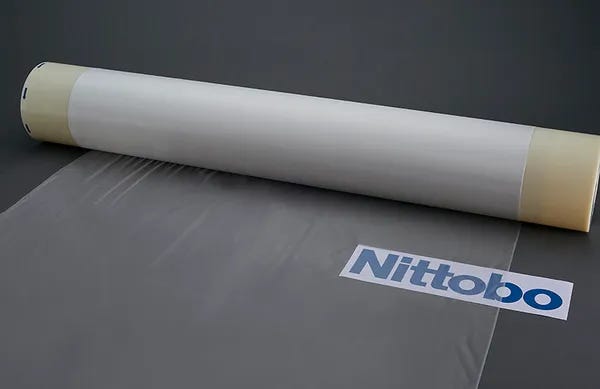As the production of GPUs for AI (Artificial Intelligence) servers explodes, concerns over the supply and demand of glass fiber, a key material for package substrates, are rising. Since the end of last year, the lead time for glass fiber delivered to CCL (Copper Clad Laminate) manufacturers has been lengthening, and with a limited number of suppliers, this supply-demand imbalance has not been resolved.
High-End Glass Fiber Monopolized by Japan's Nittobo
Glass fiber is the material that forms the 'core,' providing the physical structure in a semiconductor package substrate. The core, commonly known as 'FR4,' is made by impregnating glass fiber with resin and then hardening it. A CCL is created by laminating copper foil onto both sides of this core.
Globally, there are many companies that produce glass fiber for CCLs. However, for the glass fiber used in AI GPUs and high-end memory package substrates, 'T-glass' supplied by Japan's Nittobo is the sole option.
AI accelerator GPUs can reach temperatures of around 100°C in certain areas during high-speed computation. Therefore, a lower CTE (Coefficient of Thermal Expansion) is advantageous, and T-glass has the industry's lowest CTE at 2.8. A high CTE value can cause the substrate to expand during GPU operation, potentially leading to separation between the GPU and the substrate.
The world's largest purchasers of T-glass are Japan's MGC (Mitsubishi Gas Chemical) and Resonac. These two companies buy glass fiber from Nittobo and manufacture it into CCL substrates. Recently, the lead time for T-glass for these two companies has stretched to about 20 weeks. It was around 8 weeks at the end of last year, more than doubling this year.
Considering that glass fiber is at the very top of the semiconductor package substrate SCM (Supply Chain Management), a supply shortage is bound to affect the entire downstream industry. In particular, FC-BGA (Flip Chip-Ball Grid Array) substrates using T-glass are widely used in the 2.5D packaging of TSMC and Samsung Electronics. A shortage of T-glass will inevitably impact the shipment of TSMC's CoWoS (Chip on Wafer on Substrate) and Samsung's I-Cube.
In the memory sector, T-glass-applied CCLs are used in high-end NAND flash packages. If the T-glass supply shortage continues, it will also affect the memory shipments of Samsung Electronics and SK hynix.
A CCL industry official stated, "Currently, all incoming Nittobo T-glass is immediately fed into the production line, but we are still unable to meet customer order volumes."
Supply Shortage to Worsen Until 2027 Without Diversification
Despite this situation, Nittobo is proceeding with capital investment in a highly conservative manner. This is due to their experience around 2020 when they invested in glass fiber production capacity, only to see demand plummet right after the pandemic.
Earlier this year, Nittobo announced plans to invest 80 billion yen ($540 million) to double its glass fiber production. However, the new production facilities mentioned in that announcement are not expected to contribute to capacity until late 2027 at the earliest. The substrate industry believes it is realistically difficult for T-glass production capacity to increase significantly before 2028.
The remaining possibility is the entry of new suppliers. The CCL industry is currently evaluating new glass fiber suppliers such as Taiwan's Taiwan Glass and China's Taisan Fiberglass and Grace Fabric. However, using these companies' glass fiber to make CCL and FC-BGA requires the consent of all participants in the SCM, including GPU design firms, foundries, and CCL manufacturers. This diversification process also takes time.
A semiconductor industry expert commented, "It's already clear that Nittobo's capacity won't increase until 2028, so diversification is the only way. At the CCL manufacturer level, the evaluation of the three alternative companies is already in its final stages."
As glass fiber has recently gained attention, Nittobo's stock price has risen by about 30% in a month.
So, should we buy Nittobo now? Or should we invest in potential new suppliers like Taiwan Glass?
I recommend you look elsewhere.
Keep reading with a 7-day free trial
Subscribe to SemiconSam to keep reading this post and get 7 days of free access to the full post archives.





